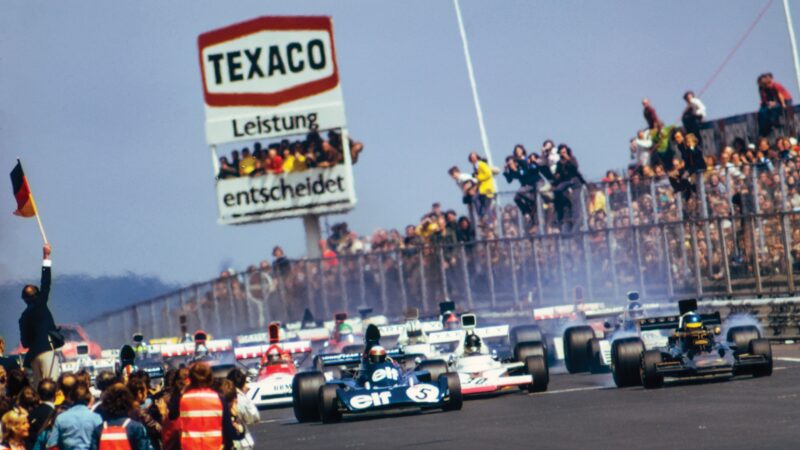1973 F1 season: Mutton-chopped grid drive through F1’s hairiest era
Jackie Stewart was spectacularly at the top of his game, but the 1973 F1 season ended with a tragic twist
Getty Images
Few knew: ‘Uncle Ken’, firm of handshake and belief, kept a mean secret; and, with views to his past, present and, wisely, future, Jackie Stewart had let a couple of Ford bigwigs in on it, too. Stewart’s super-supportive soulmate Helen wasn’t told, to prevent her the agony of counting down the days to the rest of their lives together; and nor was team-mate François Cevert, so obviously living his best life.
Stewart had recovered from the ulcer that punctured 1972 – but the knot in his stomach wouldn’t go. The baggage of international motor sport was becoming harder to bear. His fretting children were starting to ask awkward questions. So he would, he micro-revealed at a Mayfair club in April, hang up his tartan-banded crash helmet after October’s United States Grand Prix.
The euphoria he felt soon faded. Only after taking Anglican priest Father Stan Easty into his confidence was the rightness of his decision confirmed, in every sense, in room 109 of Indianapolis’s Speedway Motel. (Stewart was part of ABC’s 500 coverage).
Victories in South Africa and Belgium had been spoiled for Stewart by controversy: an unfounded accusation of his passing under yellows while Mike Hailwood was ‘winning’ the George Medal for pulling Clay Regazzoni from a burning BRM; and for his GPDA role in swapping humbling Spa-Francorchamps for crumbling Zolder. Monaco brought no such problem – until its slowing-down lap. Revelling in the win that put him level with Jim Clark on 25 victories, Stewart lost concentration for once – steering with his thighs, casually unbuckling his chin-strap – and caused a startling collision with Emerson Fittipaldi exiting the tunnel.

Tyrrell’s Stewart on pole in the German GP
DPPI
This young Brazilian reigning world champion had won three of the first four rounds but already was beginning to lose his intra-Lotus battle with Ronnie Peterson, the season’s fastest in the ageless Type 72, by now in its E variant. ‘Superswede’ finally broke through with a victory in July’s French GP, during which the even younger Jody Scheckter had proved just how fast McLaren’s new M23 – the next car for the F1 ages – could go.
Stewart, at the top of his game, likely would have won the world title in either car – perhaps in designer Gordon Murray’s Brabham BT42, too – but was instead coaxing the maximum from the stumpier, agile-verging-on-twitchy Tyrrell 006. Unbeatable at medium-speed Zandvoort – where drifting smoke from Roger Williamson’s unnecessary fatal accident reminded him of Piers Courage’s similarly gruesome demise there in 1970 – and also at the Nürburgring, he saw the team’s future whenever he glanced in his mirrors: Cevert followed him home on both occasions.
The deal was sealed at Monza when Fittipaldi, an outside bet for the title, waited in vain for Peterson to be signalled to relinquish the lead. Stewart drove more freely than ever after an early puncture forced him to charge after a pitstop. He finished fourth.
The fortnight spent in Bermuda between the Canadian and US races would be blissful, star pupil team-mate Cevert making light of an ankle injury caused by a Mosport collision with Scheckter, and Stewart relaxing for the first time for a long time, sure in the knowledge that his 100th GP would also be his last.
It was too neat. Life in F1 wasn’t like that then. There was a bump in the road. At the end of the practice session Jackie would have advised François to perhaps cross it using fewer, more settling rpm in a higher gear…
The masterclass had lost its star pupil – and the man who had done most to improve safety in racing lost a friend/protégé/‘younger brother’. The cruellest of twists.